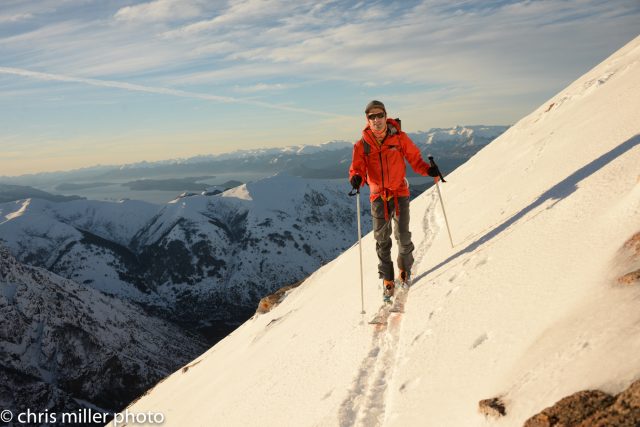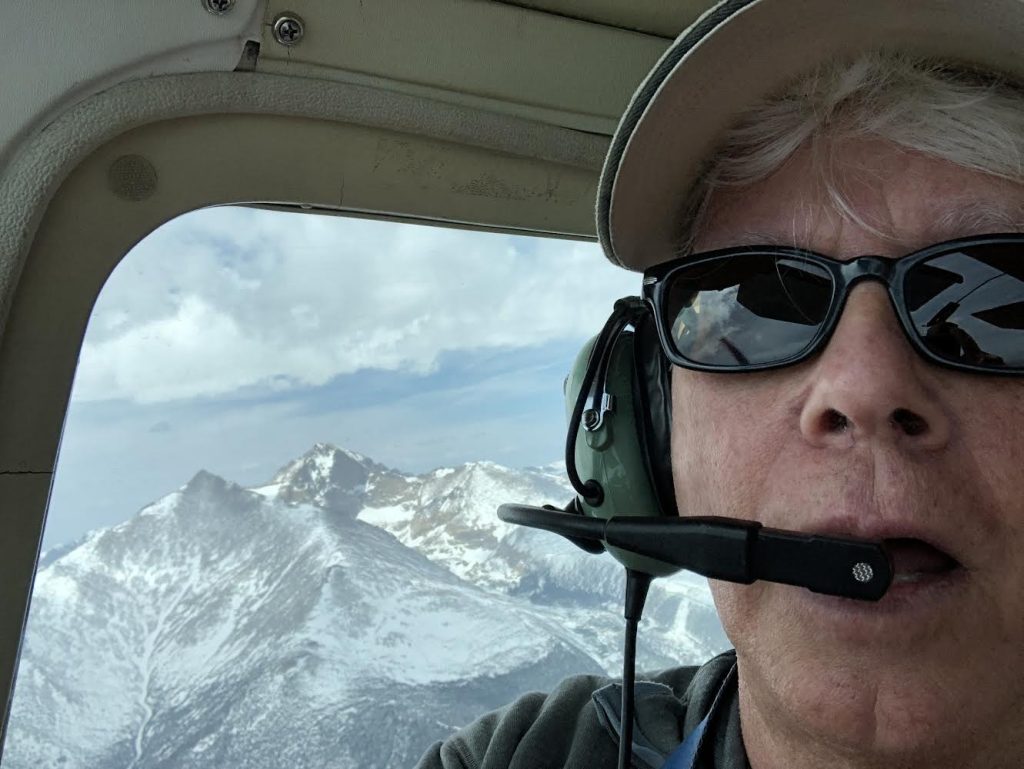
There’s two things Andy Sovick is outright obsessed with: maps and skiing. He’s built his life and career around both.
The Fort Collins native grew up in an outdoor-oriented family, and by high school he was kayaking, climbing and backcountry skiing, engaging in all things mountain sports. It was all he cared to do.
“I just had to go to Fort Lewis College in Durango as a result,” he says.
It was there his interest in backcountry skiing blossomed into a full blown addiction.
“I met a great group of friends where we all went skiing obsessively together every day of the week, whenever we could, between classes, before classes, in the dark,” Sovik says. They’d take disposable cameras with them and take pictures of mountain faces, ridgelines, chutes and other features of the surrounding terrain. They’d then use those photos to plan their next assaults.
“We were just a group of obsessed friends,” he says. “And it was honestly during those years the idea for [Beacon] was born.”
The ski bum college student had stumbled on the drifts of destiny. It would take years to fully manifest, but without knowing it, he was honing skills that would lead him to a career writing and publishing some of the best backcountry skiing guidebooks sold anywhere.
“One of my college friends, a good 10 years after we graduated, was living on the west side of the Tetons and published a little staple-bound aerial photo atlas of the Targhee backcountry (in Wyoming),” Sovick recalls. “When he showed me that, a lightbulb went off.”
In 2013, Sovick started working on his very own atlas of Crested Butte’s most popular backcountry skiing areas. He chartered an airplane and took aerial photos of the landscape in the wintertime, putting them together into a guidebook of sorts: the “Off-Piste Ski Atlas” for Crested Butte.
Sovick made one for the Silverton zone the year after that. Then his phone rang. It was a mountain guide from Washington state who’d seen his atlases and wanted to make one for Snoqualmie Pass outside of Seattle.
“That’s where the publishing company was born,” Sovick says. “I had no idea what I was biting off, but I jumped in and we got his product published and ever since then we’ve just been growing a couple of titles per year.”
Which is putting it modestly. In the seven years since Sovick officially founded Beacon Guidebooks, he’s worked tirelessly with dedicated authors, publishing nine atlases for different areas around the country, nine topo maps to accompany the books, and an avalanche rescue guidebook.

This year Beacon is adding seven more maps and three more guidebooks — two of which are for backcountry skiing zones in Boulder’s backyard.
Beacon Guidebooks are unique among their class of outdoor literature. They’re technical, and they go into extreme and minute detail describing the terrain and avalanche danger of different slopes, much of which is in terms newcomers might find daunting.
But that’s by design, Sovick says.
“For a total beginner to backcountry skiing, I think the books would be fairly confusing and intimidating, which I think is a good thing,” Sovick says. That doesn’t mean you shouldn’t use them, he continues, it’s just a good reminder that the backcountry is serious.
“It’s not a place to just jump right in and try it out,” he says. “There’s a lot to learn, and if the atlas and maps are confusing to you, it probably means you should be hiring a guide and taking more education.”
His guidebooks and maps identify the “uptracks” (ascent routes) and “downtracks” (runs). They include general aspects for all zones, Avalanche Terrain Exposure Scale ratings, max slope angle and descent elevation loss for each run, objective hazards, avalanche terrain information, access and ascent information and exit information for every zone. There’s even an “Avulator” table at the beginning to help match a skiers’ backcountry education level to available terrain and conditions.
The guidebooks are light enough to be easily carried in a backpack, and the maps are waterproof and perfect for taking into the field and whipping out on the trail.
Beacon’s newest guidebooks and maps for Colorado are firsts for both the areas they describe. One is for Rocky Mountain National Park (RMNP) and the other is for Cameron Pass in Northwestern Colorado (and a third is for Steven’s Pass in Washington).
The RMNP guidebook was written by Mike Soucy, a lifelong skier and Estes-based mountain guide who’s been skiing the park for two and half decades. You can tell, flipping through the pages of Soucy’s Beacon Guidebook, he doesn’t mess around — this guy skis the big stuff in the way back. His guidebook covers the parks’ couloirs, mountains, peaks, glaciers and glades, describing them with the kind of intimacy that’s only gleaned from a lifetime of first-hand experience.
The Cameron Pass guidebook was authored by a local Fort Collins ski legend, and Cameron Pass aficionado, Rodney Ley. Ley’s been skiing since the boots were leather and the boards were solid wood, and says his trips to Cameron Pass over the last 50 years number in the hundreds, “at least.”

After all, Ley helped establish Cameron Pass as one of the premiere backcountry zones in that part of Colorado.
“Cameron Pass is absolutely my favorite and that’s because it is completely remote,” Ley says. “The book, for me, was the culmination of a lifetime of sharing and gathering information in that part of the state.”
Sovick knew Ley growing up in Fort Collins. Sovick went to school with Ley’s son, and used to spend his spare time in the mountain shop Ley owned, Sovick’s “go-to” for all things backcountry skiing.
“I spent a lot of time just staring at gear that I couldn’t afford or didn’t know how to use yet,” Sovick recalls with a chuckle. So, when he wanted to publish a book about backcountry skiing in the Cameron Pass zone, he knew exactly who to call.
“He really is the authority on that ski terrain,” Sovick says of Ley. “He is a total map geek and is one of the best authors I’ve ever worked with.”
Which is saying something. Because Sovick has worked with some incredible authors over the years. Beacon Guidebooks wouldn’t have been possible at all without them. “It’s really important to give a lot of credit to these authors,” he says.
Almost 10 years into making Beacon Guidebooks and Sovick says he’s finally getting his system dialed in. The books come together much faster than they used to.
“We have a process now that’s much more streamlined than it was in 2013,” he says. “Now, there’s a few of us in the office that are just hell bent on getting these books made as fast as possible.”
Beacon Guidebooks have come a long way since that first photo atlas of Crested Butte that Sovick published back in 2013. They’re one of the premiere guidebook brands for backcountry skiing, and they’re only getting better. Skiers huddle over them around kitchen tables with friends, planning their next backcountry ski trip — just like Sovick used to do with his obsessed college friends.
Sovick says that’s one of the most rewarding parts of creating the guidebooks.
“I always say the line between planning and dreaming is very blurry and undefined,” he says. “[Providing that for other skiers] is really rewarding for me, for sure.”














